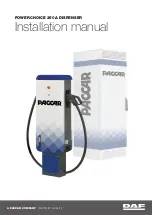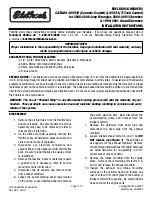
2-39
THIRD (3): This position is also used for normal
driving, but it offers more power and lower fuel
economy than AUTOMATIC OVERDRIVE (D).
Here are some times you might choose THIRD (3)
instead of AUTOMATIC OVERDRIVE (D):
D When driving on hilly, winding roads.
D When towing a trailer, so there is less shifting
between gears.
D When going down a steep hill.
D When driving in non
-
highway scenarios
(i.e. city streets, etc.).
SECOND (2): This position gives you more power but
lower fuel economy. You can use SECOND (2) on hills.
It can help control your speed as you go down steep
mountain roads, but then you would also want to use
your brakes off and on.
NOTICE:
Don’t drive in SECOND (2) for more than
25 miles (40 km), or at speeds over 55 mph
(90 km/h), or you can damage your transaxle.
Use AUTOMATIC OVERDRIVE (D) or
THIRD (3) as much as possible.
Don’t shift into SECOND (2) unless you are going
slower than 65 mph (105 km/h), or you can
damage your engine.
Summary of Contents for 2002 Impala
Page 1: ......
Page 6: ...v These are some examples of vehicle symbols you may find on your vehicle ...
Page 144: ...2 78 The Instrument Panel Your Information System ...
Page 147: ...2 81 3800 V6 Engine Cluster United States version shown Canada similar ...
Page 348: ...6 59 GM Vehicle Care Appearance Materials ...
Page 366: ...Scheduled Maintenance 7 7 ...
Page 367: ...Scheduled Maintenance 7 8 ...
Page 383: ...7 24 Maintenance Record DATE ODOMETER READING SERVICED BY MAINTENANCE PERFORMED ...
Page 384: ...7 25 Maintenance Record DATE ODOMETER READING SERVICED BY MAINTENANCE PERFORMED ...
Page 385: ...7 26 Maintenance Record DATE ODOMETER READING SERVICED BY MAINTENANCE PERFORMED ...
















































